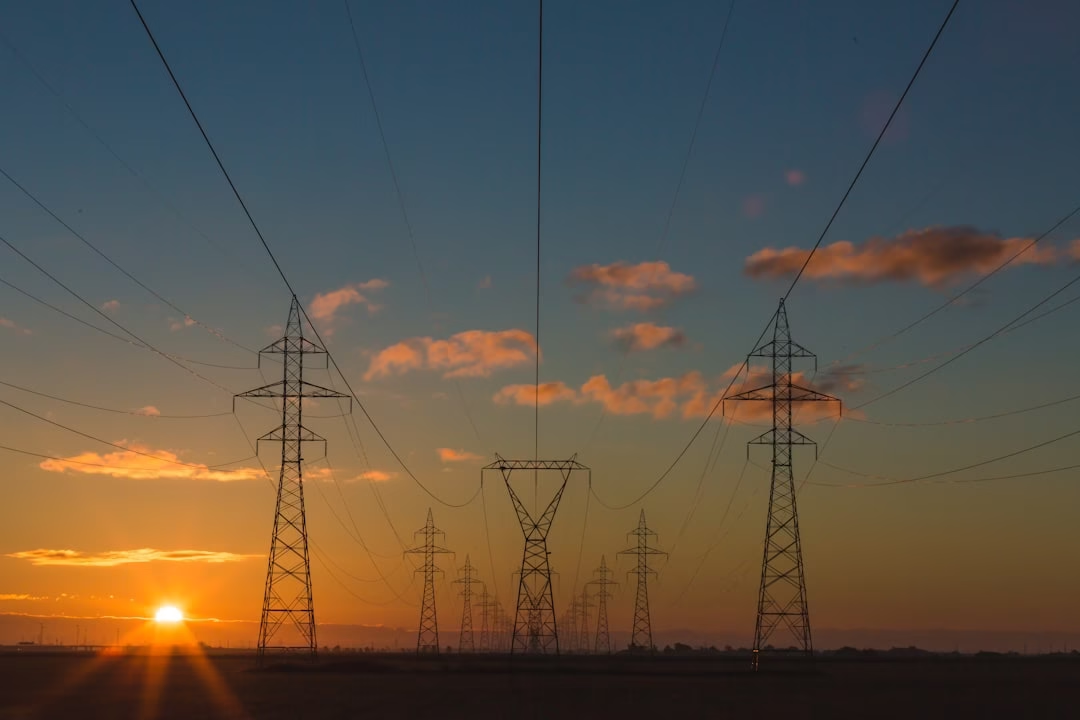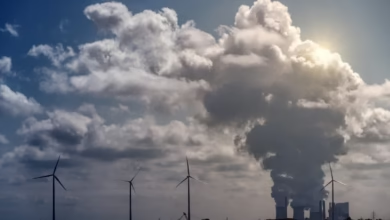The Future of Energy Transportation: Electric Vehicles, Hydrogen Innovations, and Sustainable Aviation Fuel Transforming Global Energy Trends

The transportation sector is undergoing a remarkable transformation, fueled by advances in renewable energy and innovations aimed at reducing our reliance on fossil fuels. As concerns about climate change intensify, electric vehicles (EVs), hydrogen fuel cells, and sustainable aviation fuels are reshaping global energy trends and redefining how we move people and goods. Energy efficiency, energy policy, and new technologies play a pivotal role in this shift, impacting everything from energy imports and exports to energy security and investment opportunities in both established and emerging energy markets.
In this article, we will explore how the transition from fossil fuels to green energy sources is revolutionizing energy use in transportation. We’ll examine the accelerating adoption of electric vehicles and the critical role of renewable energy in their widespread implementation. Next, we’ll investigate the latest hydrogen energy breakthroughs and sustainable aviation technologies driving a new era of decarbonized mobility. Finally, we’ll discuss the regulatory and technical challenges that must be addressed—such as energy storage, distributed energy, smart grids, and carbon capture—to achieve a resilient, efficient, and sustainable transportation system. Join us as we delve into the evolving landscape of energy transportation, the innovations shaping our low-carbon future, and the global energy R&D efforts driving a cleaner tomorrow.
- 1. Electric Vehicles and the Shift from Fossil Fuels: Transforming Energy Use in Transportation
- 2. Hydrogen Energy and Sustainable Aviation: Innovations Driving Green Transportation
- 3. Energy Policy, Storage, and Efficiency: Overcoming Barriers in the Global Energy Transition for Transportation
1. Electric Vehicles and the Shift from Fossil Fuels: Transforming Energy Use in Transportation
The rise of electric vehicles (EVs) represents a major turning point in the energy landscape of transportation. Traditionally, cars, trucks, and buses have relied overwhelmingly on fossil fuels such as gasoline and diesel, contributing significantly to greenhouse gas emissions and climate change. Today, however, the shift toward electric vehicles is accelerating, driven by the urgent need for energy transition, improved energy efficiency, and the adoption of renewable energy sources.
EVs operate on electricity, which can be generated from diverse sources, including solar power, wind energy, hydropower, and even nuclear energy. This versatility supports the broader integration of green energy into transportation networks, reducing dependence on oil and enhancing energy security, especially as global energy markets shift toward more sustainable practices. As the number of EVs grows, so does the demand for reliable energy storage solutions, such as advanced batteries, to balance energy supply and demand, and smart grids are becoming increasingly vital for efficient energy distribution and charging management.
Energy policy and investment are playing crucial roles in this transition. Governments worldwide are introducing incentives for EV adoption, funding energy R&D, and supporting the expansion of charging infrastructure to empower both urban and rural areas. These measures not only help reduce carbon emissions but also promote energy innovations that drive down costs and improve the performance of electric vehicles.
Moreover, the move towards electrification brings new opportunities and challenges for energy economics. Countries that have traditionally focused on energy exports and imports must adapt to changes in demand, with some regions investing in offshore energy projects or distributed energy systems to maximize their renewable potential. At the same time, the reliance on renewable sources necessitates advances in carbon capture and storage, ensuring the cleanest possible energy transition.
Ultimately, electric vehicles are reshaping energy transportation by shifting away from the limitations of thermal energy and fossil fuels towards a dynamic system powered by green and renewable energy. As global energy trends evolve, the adoption of EVs is likely to spur continued innovations and investments, making transportation more sustainable, resilient, and central to the fight against climate change.
2. Hydrogen Energy and Sustainable Aviation: Innovations Driving Green Transportation
Hydrogen energy is rapidly emerging as a transformative solution for reducing reliance on fossil fuels within the global transportation sector. As pressure mounts from energy policy initiatives and climate change goals, hydrogen stands out for its versatility and potential to decarbonize both land and air travel. Innovations in hydrogen fuel cell technology and sustainable aviation are driving important shifts in energy transportation, aligning with the broader energy transition underway in global energy markets.
Hydrogen-powered vehicles, particularly in heavy-duty transport and aviation, offer significant improvements in energy efficiency and energy security. Unlike conventional fuels, hydrogen energy produces zero emissions at the point of use, making it a prime candidate for green energy strategies. Several leading energy R&D efforts are focused on improving hydrogen production methods, including electrolysis powered by renewable energy sources such as wind energy and solar power. These clean production processes, known as "green hydrogen," significantly reduce the carbon footprint compared to hydrogen derived from fossil fuels.
In the aviation sector, airlines and aircraft manufacturers are collaborating to develop sustainable aviation fuels (SAFs) and hydrogen-powered propulsion systems. SAFs, often derived from bioenergy or waste products, offer a lower-carbon alternative to traditional jet fuel. Meanwhile, hydrogen energy is being tested in pilot projects for short-haul flights, driven by innovations in energy storage and thermal energy management. These advancements are shaping new paradigms in energy economics and energy investment, attracting interest from both public and private sectors eager to accelerate the shift towards sustainable, distributed energy solutions.
The shift toward hydrogen and SAFs also introduces new dynamics in energy imports and energy exports. Countries investing in offshore energy infrastructure and smart grids are better positioned to support large-scale hydrogen production and distribution. Furthermore, these technological advances promote energy independence and resilience, key facets of energy security in an era marked by fluctuating global energy trends.
By integrating hydrogen energy and sustainable aviation fuels, the transportation sector is poised to lead the way in the energy transition. Ongoing research, policy support, and investment in energy innovations will be critical to realize the full potential of these green energy solutions—reducing greenhouse gas emissions, enhancing energy efficiency, and securing a sustainable future for mobility.
References
International Energy Agency. (2023). Global hydrogen review 2023. https://www.iea.org/reports/global-hydrogen-review-2023
International Air Transport Association. (2023). Sustainable aviation fuels. https://www.iata.org/en/programs/environment/sustainable-aviation-fuels/
World Economic Forum. (2024). Why hydrogen could be the future of clean energy. https://www.weforum.org/agenda/2024/02/why-hydrogen-future-clean-energy-electric-vehicles/
3. Energy Policy, Storage, and Efficiency: Overcoming Barriers in the Global Energy Transition for Transportation
As the global energy transition accelerates, transportation faces particular challenges tied to energy policy, storage, and efficiency. Shifting from fossil fuels to renewable energy in this sector demands a careful balance of technology, infrastructure, and investment. One of the most significant barriers is the integration of intermittent sources like solar power and wind energy into transportation networks. These green energy options require advanced energy storage solutions to ensure reliable supply, especially for electric vehicles (EVs) and charging stations that may not always align with peak renewable generation (IEA, 2023, https://www.iea.org/reports/global-ev-outlook-2023).
Energy policy plays a central role in guiding this transition and can spur energy innovations such as distributed energy systems and smart grids. These tools support energy efficiency by optimizing when and how energy is used, moving away from centralized fossil fuel-based plants to more flexible and resilient systems. For example, integrating hydrogen energy—produced from offshore energy, wind, or solar—into transportation and energy markets is advancing, but widespread adoption depends on regulatory frameworks that support R&D, infrastructure investment, and market viability (IRENA, 2022, https://www.irena.org/publications/2022/Jul/Global-Hydrogen-Trade-to-Meet-the-1.5C-Climate-Goal).
Thermal energy management and the development of sustainable aviation fuels highlight the complexity of replacing petroleum-based fuels in certain modes of energy transportation, such as aviation and shipping. Here, bioenergy, carbon capture, and even nuclear energy are being researched as potential options to improve energy security and reduce climate change impacts, though each comes with technical and energy economics considerations.
Overcoming these barriers requires global coordination. International energy markets—shaped by energy exports and energy imports—must adapt to new patterns as nations invest more heavily in renewable energy and hydropower while phasing out conventional sources. Strategic energy investment in energy storage, infrastructure upgrades, and policy-driven energy R&D are critical for future-proofing the transportation sector and ensuring that the energy transition not only reduces emissions but also supports resilient, efficient, and secure mobility systems worldwide (World Bank, 2023, https://www.worldbank.org/en/topic/energy/overview).
References
International Energy Agency. (2023). Global EV Outlook 2023. https://www.iea.org/reports/global-ev-outlook-2023
International Renewable Energy Agency. (2022). Global Hydrogen Trade to Meet the 1.5°C Climate Goal: Part I: Trade Outlook for 2050 and Way Forward. https://www.irena.org/publications/2022/Jul/Global-Hydrogen-Trade-to-Meet-the-1.5C-Climate-Goal
World Bank. (2023). Energy Overview. https://www.worldbank.org/en/topic/energy/overview
In conclusion, the future of transportation is being fundamentally reshaped by the drive toward renewable energy and greater energy efficiency. Electric vehicles, hydrogen energy, and sustainable aviation fuels are pioneering the shift away from fossil fuels, spurred by advances in energy R&D and smart grids. This transition not only supports global energy trends but also promotes energy security and addresses the urgent challenges of climate change.
As energy transportation technologies diversify—integrating hydropower, wind energy, and solar power—energy storage and efficiency solutions become critical for ensuring reliable, distributed energy delivery. Meanwhile, robust energy policy frameworks and innovative carbon capture strategies will help balance the demands of energy markets and facilitate a smoother transition from conventional to green energy sources.
Ongoing investment in energy innovations and a broader commitment to developing offshore energy, bioenergy, and even nuclear energy are essential for a sustainable, resilient transportation sector. To truly realize the benefits of the energy transition, coordinated global action and smart energy economics are required to overcome existing barriers and seize emerging opportunities. By prioritizing these efforts, the world can encourage energy exports, reduce energy imports, and position itself at the forefront of clean, efficient, and sustainable energy transportation solutions.





